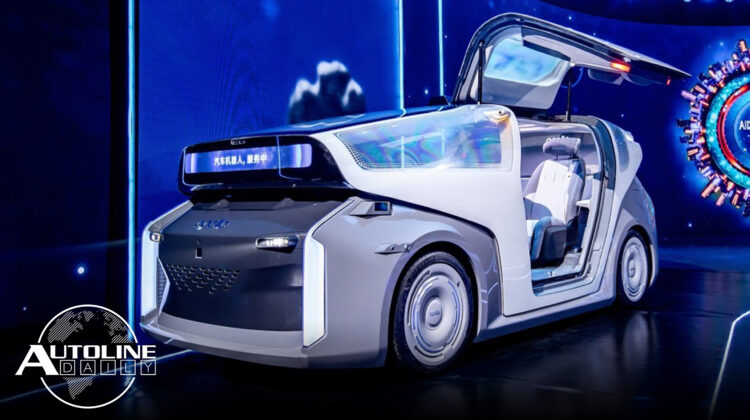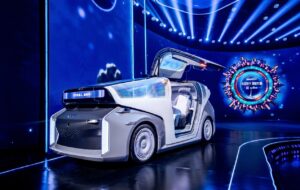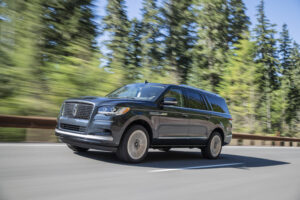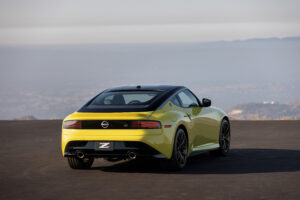
Listen to “AD #3142 – Auto Workers Want Higher Pay in Developing Countries; Waymo Losing Its Lead in AVs; Baidu Reveals Funky Robocar” on Spreaker.
Follow us on social media:
Runtime: 11:48
0:07 GM Mexico Workers Could Vote for New Union
1:13 India Asks Nissan to Pay Workers More
3:13 FCA Fined for Role in UAW Scandal
4:04 U.S. Senators Urge FTC to Probe Autopilot
4:31 Waymo Struggling to Bring Out AV Tech
5:33 Baidu Unveils Funky Robocar
7:08 Lincoln Refreshes the Navigator
8:04 Performance S Versions of Audi e-tron Coming to the U.S.
9:46 Nissan Reveals New U.S.-Spec Z car
Visit our sponsors to thank them for their support of Autoline Daily: BorgWarner, Bridgestone, Intrepid Control Systems, Schaeffler and Wacker.
This is Autoline Daily, the show dedicated to enthusiasts of the global automotive industry.
GM MEXICO WORKERS COULD VOTE FOR NEW UNION
We start off today’s show with a short history lesson. 107 years ago the Ford Motor Company began paying its factory workers $5 a day. In today’s dollars that’s $136 a day, or about $30,000 a year. And that’s much more than General Motors is now paying its factory workers in Mexico. Reuters reports one factory worker at GM’s plant in Silao says she only takes home $115 a week. That plant makes Silverado and Sierra pickups which typically sell for more than $50,000. Unions in Mexico are notoriously deferential to company management. But the new USMCA trade agreement puts teeth into collective bargaining. And workers in the Silao plant are voting today whether or not to get rid of their union and put a new one in place. One of the goals of the USMCA agreement is to raise wages in Mexico, so American companies don’t move so many jobs south of the border.
INDIA ASKS NISSAN TO PAY WORKERS MORE MONEY
Now let’s move over to India where a labor arbitrator is ordering Nissan to pay its factory workers more money. Nissan only pays them about $471 a month. That’s only $5,600 a year. The workers are demanding that Nissan raise their pay by 93%. We estimate that would raise Nissan’s labor costs to about $38 million a year. Nissan is pleading poverty, saying the plant is losing money and threatens that it could end up closing it. But Reuters reports that Ford already pays its workers in India over $800 a month and Hyundai pays its workers over $1,000 a month.
Here’s our Autoline Insight. It is stunning and maddening to see that automakers are paying their workers in developing countries less money than American workers made over a century ago. Even though the cost of living in those countries can be very low, it’s clear that these automakers are not paying their workers nearly enough. They’re exploiting them. And it’s good to see that this problem is starting to get the attention it deserves.
FCA FINED FOR ROLE IN UAW CORRUPTION
FCA is being punished for its role in the UAW corruption scandal. A federal judge ruled the automaker must pay $30 million for $3.5 million in bribes it gave to UAW leaders in order to secure more favorable labor contracts. FCA, which is now part of Stellantis, must pay the fine within the next 30 days. The money will go to the U.S. Treasury general fund, but the automaker doesn’t have to pay any restitution to union members. On top of the fine, an independent monitor will oversee the company for the next three years to make sure it’s complying with labor laws. Earlier in the year, FCA pled guilty to violating the Labor Relations Management Act and three of its former executives were convicted in the corruption scandal.
U.S. SENATORS URGE FTC TO PROBE AUTOPILOT
But it’s not the only automaker in hot water with authorities. A few days after NHTSA announced its launching an investigation into its Autopilot system, two U.S. Senators are urging the Federal Trade Commission to look into claims Tesla made about the technology. The senators say the company has misled consumers about its capabilities by marketing the system as fully-self driving, which, they claim, put riders and other road users in danger.
WAYMO SHOULD HAVE DEVELOPED ADAS TECH
Waymo had the early lead in autonomous cars, but now it’s struggling to commercialize its technology. Worse, the chief executive officer, chief financial officer, and the heads of trucking, manufacturing, and automotive partnerships all quit the company. Meanwhile, GM Cruise is now testing autonomous cars in San Francisco. And Argo AI, which is backed by Ford and Volkswagen, is going to launch an autonomous ride-hailing service in Miami and Austin later this year. An executive at a major Tier 1 supplier tells Autoline that Waymo should have used its technology to develop ADAS. The market for advanced driver assist systems is red hot and Waymo could have generated good cash flow, they said. Instead, Waymo insisted it would only develop Level 4 and 5 tech and missed out on the ADAS market. And now it’s in danger of losing its lead in autonomous technology.
BAIDU UNVEILS FUNKY ROBOCAR
Chinese tech giant Baidu is making progress with autonomous technology and just revealed its first robocar. The wild, futuristic vehicle has no steering wheel or pedals and is equipped with Level 5 autonomous technology. It has voice and facial recognition capabilities and it can self-learn many tasks. Other features include gull-wing doors, a glass roof and a large display screen in the interior. Baidu also revealed that its started to mass-produce its 2nd-gen AI chip. Its computational capability is 2 to 3 times greater than the previous generation and is designed to be used in autonomous vehicles.
LINCOLN REFRESHES THE NAVIGATOR
With an average transaction price of over $91,000 the Lincoln Navigator is an extremely important profit generator for the company and it just got a refresh. Now, you’re not going to look at this and say, ‘wow, it looks all new.’ But there are subtle tweaks to the grille, front fascia, projector headlamps and 3D rear taillights. The interior also comes in new design themes as well as getting a larger 13.2 inch floating center screen, re-imagined head-up display and even a small digital screen that 2nd row passengers can use to adjust the climate and audio settings. The last thing we’re going to highlight is ActiveGlide, which is Lincoln’s name for BlueCruise, the company’s hands-free driving technology. The new Navigator will start arriving in dealerships early next year.
PERFORMANCE S VERSIONS OF AUDI e-tron COMING TO THE U.S.
The performance S versions of the Audi e-tron and e-tron Sportback are coming to the U.S. this fall. They feature two motors on the rear axle instead of one, which combines with the motor on the front axle for 429 horsepower and nearly 600 lb-ft of torque. Audi USA didn’t reveal 0-60 time but the European versions do 0-100 km/h in 5.1 seconds. There’s also a boost mode that allows drivers to tap into full power of 496 horsepower and 718 lb-ft of torque for up to 8 seconds. It drops 0-60 to 4.3 seconds. Compare that to the standard version of the e-tron and we’d say you could call these true performance versions, not posers in performance clothing. And range is not taking a huge hit from the same 95 kWh battery pack. The EPA estimates 208 miles for the SUV and 212 miles for the Sportback. Other performance add-ons include a nearly 2 inch wider track, upgraded 6-piston front calipers and standard adaptive air suspension. Price reflects all the extras. The SUV starts at nearly $86,000, including destination, while the Sportback S starts at over $88,000. That’s $19,000 more than the base SUV and $18,000 more than the base Sportback.
NISSAN REVEALS NEW U.S.-SPEC Z CAR
In other performance car news, Nissan revealed the U.S.-spec version of the all-new Z car. Under the hood is a 3.0L twin turbo V6 engine that makes 400 horsepower and 350 lb-ft of torque, which is 68 HP and 30% more torque than the 370Z. It’s mated to either a 6-speed manual or optional 9-speed automatic. With the extra power body rigidity was enhanced, new monotube shocks with a larger diameter were added to the front and rear, the geometry of the front double-wishbone suspension was tweaked and a limited slip differential is optional. Add it all together and tack on wider front tires and the new Z car increased cornering performance by 13%. That’s likely one of the reasons Nissan says the interior was designed to fit the driver and passenger like a glove. The seats appear to have nice side bolstering, which comes in body color as well. And that same accent can also carry over into the dash, doors and center console. The interior is finished off by digital display screens for the instrument cluster and infotainment and three analog gauges mounted high on the dash, a nod to previous Z cars. The new model will start hitting Nissan’s U.S. dealers in the spring of next year.
But that brings us to the end of today’s show. Thanks for watching.
Thanks to our partner for embedding Autoline Daily on its website: WardsAuto.com
Seamus and Sean McElroy cover the latest news in the automotive industry for Autoline Daily.











